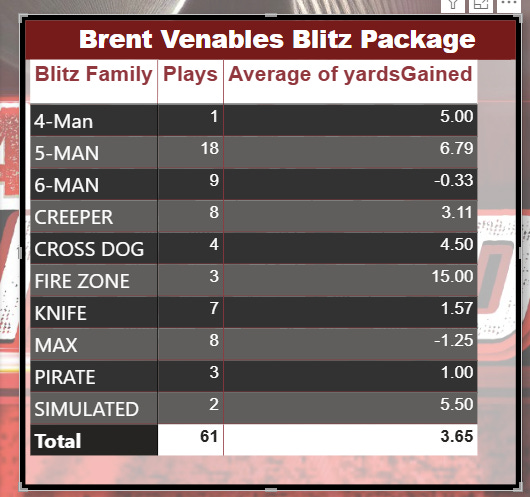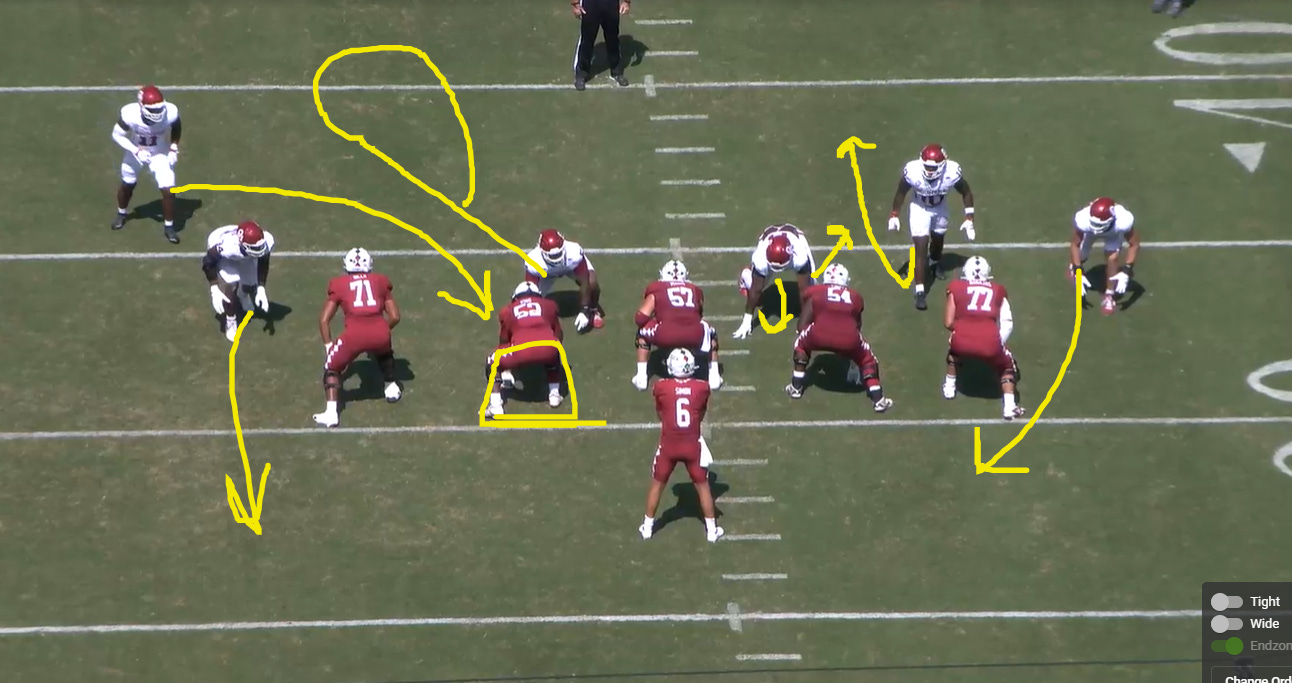We started this to be different, plain and simple. We wanted our own voice. The podcast packs film study, advanced stats, and real takes. At the same time we’re building a gameday crew around a great tailgate. There’s a lot going on: breaking down the why on film, pulling data from a bunch of places, and hosting a tailgate that feels like family. It’s work, but it’s a lot easier when you’re having this much fun.
This week lets take a hard look at this defense.
Dave Aranda took back defensive play-calling in 2024 because Baylor’s defense cratered in 2023 and he wanted to lean on his coordinator pedigree rather than leave it fully to his defensive coordinator. Multiple reports ahead of 2024 noted the switch and tied it to fixing a unit that was among the bottom quarter of FBS in yards and points allowed. The result was a bounce-back year: Baylor won six straight to finish the regular season 8–4, went 8–5 overall. Dave Aranda got back on track by returning to his core stuff. He is a Quarters coach at heart. When it is not Quarters, it is usually man free, with some Cover 3 fire zones, especially versus 3 by 1. In other words, fewer freebies and cleaner fits by living in what he does best.
After Zac Alley left for West Virginia, Brent Venables took over Oklahoma’s defensive play calling for 2025. Under Alley, OU leaned on a four man rush and lived in Cover 6 to limit explosives; PFF charted the Sooners with the second most Cover 6 usage in the country. This season Venables has flipped the script, dialing up pressure and leaning into match coverage. OU suffocated Michigan with frequent blitzes and then smothered Temple as the defense climbed near the top of the national rankings across most advanced metrics.
Much like Dave Aranda, Brent is once again showcasing what he does best.
Let’s dive into the pressure looks he has shown through the first few weeks.
Straight 4 man: standard rush — ~5.0 yards.
5 man: bread and butter, add one rusher and keep coverage sound — most used (18 snaps), giving up ~6.8 yards. These are your plug blitzes back the Mike and Will most often.
6 man: heavy heat, often man free — slight negative yards on average (-0.33). We have ran both combo backer or a corner.
Creeper: four rushers with a backer or nickel inserting and a end dropping. — ~3.1 yards. This is your Corner/Cheetah with backside edge peel.
Simulated: show pressure, rush four, drop a lineman — ~5.5 yards.
Cross Dog: Mike and Will swap A gap responsibility blitz— ~4.5 yards.
Fire Zone: classic zone blitz, 3 under 3 deep — tiny sample, got hit (~15.0). (Michigan Game)
Knife: 5-man pressure when Cheetah “knife” through C/D Gap.— ~1.6 yards.
Max: bring the house with Hot Coverage behind it— best impact here (-1.25).
Pirate: end-tackle slant with Backer loop ~1.0 yard.
Creepers and Sims are replacement pressures. Generally, four man pressures but defensive coordinators are mixing in many different looks. These became all the rage with modern RPO spread taking over college football. A backer or nickel inserts and a lineman drops, so you still have seven in coverage. They are great on early downs against RPO teams because you stress protection without giving up the back end. This is considered “safe” pressure.
Simulated pressures show five or more on the line pre snap, but at the snap you still rush four and drop others. They are usually for passing downs to mess with the protection ID and change the picture post snap. Both create doubt for the quarterback while keeping coverage sound.
Below is an example of a simulated pressure.
Showing 5 man pressure.
3rd and 3 - Coverage is Cover 0/Hot.
Edge Rushers: Contain on pressure.
IDLs: Both drop into the Low Hole to cut passing windows.
Mike: (Kobie) is coming right now.
Will: (Kip) Drops out.
Offensive line protection: C-LG-RT Zone or “Sift” the right side towards Kip showing pressure. Sift implies these 3OL will zone/sort defenders during the rush. Leaving the LT and LG to man the remaining Edge and IDL. As soon as Damonic Williams drops, the LG is left blocking air. This is the hallmark of elite defensive coordinators in their pressure schemes: manipulate protection to get offensive linemen blocking air, apply just enough pressure to disrupt the quarterback, and maintain coverage integrity by keeping numbers on the back end.
Kobie Delivers the blow.
Easy money on 3rd down.
OU’s defense is blitzing on about 40% of snaps and allowing only 3.65 yards per play on those calls. That is a big shift from last season. Under Zac Alley, OU did not use this many pressure types, this often, or at this rate.
Through three games you can feel Brent getting loose. He is calm on the sideline, no get back coach needed, fully in control, and the defense is flying. The pressure is real and the guys look like they are having a blast teeing off. We will need that juice as the schedule toughens up. Over the next few days we will break down a few of the pressures and the coverage tendencies behind them.
If this added value to your day, consider sharing the free newsletter. Your word of mouth keeps this project alive and helps us bring more Sooners content to more people.
Thank you for reading!
Boomer!
Rob



